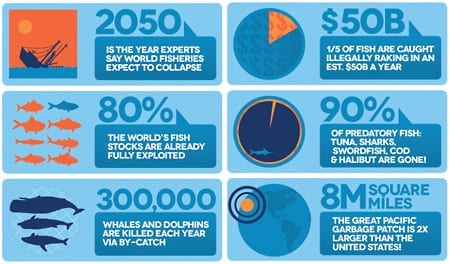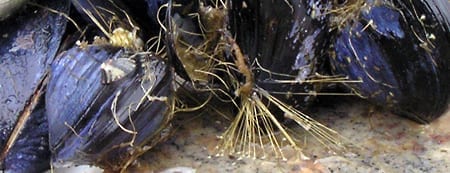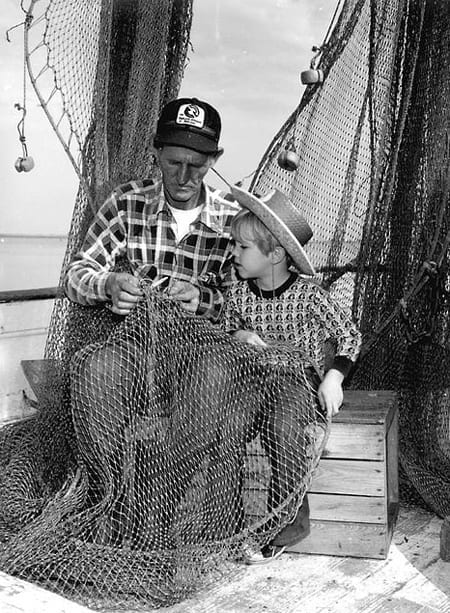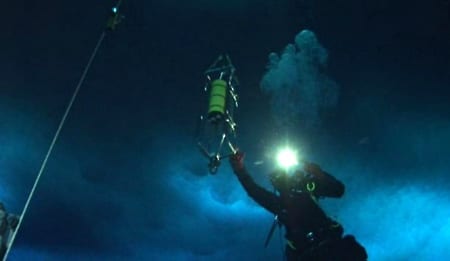Three years ago you really needed to scrape at the bottom of the barrel to come up with news on the web about Ocean Acidification. Today I am “only” posting 13 items and have to leave at least 10 more out:
≈≈≈≈64% of the waters existing outside national jurisdiction, the “high seas”, are yours. And mine. As John Platt rightly writes in a recent Mother Nature Network article, “according to the United National Law of the Sea Convention, these unregulated bodies of water — and the fish and minerals they contain — belong to all of mankind and should be used to serve the common good.”
The new TerraMar Project wants to protect those high seas. If you visit their site you can claim a parcel of the ocean, take a virtual dive with Google, friend a marine species or find interesting educational projects. Although the main purpose of the website is to celebrate the oceans, the website does address the various threats to life inside those waters, from plastic pollution to illegal dumping, from overfishing and whaling to Ocean Acidification.
VISIT THEIR WEBSITE and BECOME A CITIZEN
SOURCE
≈≈≈≈Sweden wants trash and wants it badly. The Scandinavian nation is facing an unusual problem since their waste-to-energy program began running out of source material. 20% of Sweden’s district heating comes from garbage incinerators, but they are not producing enough waste to feed it on their own, so 800,000 tons of trash are being imported every year from neighboring European countries (mainly for those new rich, the Norwegians) to power plants. That is how Norway has ended paying Sweden to take their trash and then receives the residue polluted ashes, filled with heavy metals, back to bury in home soil.
You can read or listen to the original PRI information HERE.
≈≈≈≈A CBS news piece about Ocean Acidification and oyster farming in Washington State.
≈≈≈≈The Smithsonian announced this week the launching of a $10 million project to study coastal marine biodiversity and ecosystems around the world over a long period of time.
“The Tennenbaum Marine Observatories will be the first worldwide network of coastal ecological field sites, standardizing measurements of biological change. By studying sites with Smithsonian experts in biology, ecology and anthropology, and using technologies like DNA sequencing, the project will provide an unprecedented understanding of how marine biodiversity is affected by local human activities and global change, such as ocean warming, acidification and rising sea levels.”
“The project will have five field sites: the Smithsonian Environmental Research Center in Edgewater, Md., on the Chesapeake Bay, the Institution’s marine station at Fort Pierce, Fla., Carrie Bow Cay in Belize and the Smithsonian Tropical Research Institute’s two locations in Panama—Bocas Del Toro on the Caribbean and Naos station on the Pacific. As the project grows, the Smithsonian will establish additional research sites with collaborators around the globe to monitor coastal ocean health, with the goal of at least 10 new sites within the next decade.”
SOURCE at ARTDAILY.ORG
≈≈≈≈Mussels could lose their anchor with Ocean Acidification: FHL’s Emily Carrington’s lab presented a study at the Third International Symposium on the Ocean in a High CO2 World last month that showed how the silky threats (byssus fibers) glueing mussels to one another and to rocks become significantly weaker in water with a pH lower than 7.6. Water temperature seems to also be a major factor, “with threads about 60 percent weaker in 77 degree Fahrenheit water than in cooler 65 degree water. READ MORE about mussels’ sticky substance and why researchers think it can offer important insights for developing new adhesives.”
Nice NPR audio piece on byssal threats HERE.

PHOTO CREDIT: EMILY CARRINGTON FOR INSIDESCIENCE.ORG
SOURCE
≈≈≈≈Interdisciplinary symposium on Ocean Acidification in Hong Kong from 11-14th of December, 2012.
SYMPOSIUM SCHEDULE
Tuesday (Dec. 11th 2012)
Opening ceremony and mixing party (starts at 4.30 pm)
Wednesday (Dec. 12th 2012)
Climate change: coastal warming, acidification and hypoxia
Coastal aquaculture and fisheries in a changing climate
Coastal climate change: a physiological perspective
Larval life in the changing coastal oceans
Thursday (Dec. 13th 2012)
Biomineralization: a materials engineering perspective
“OMICS”: a powerful tool in modern ecology research
The forum for collaborative coastal acidification research
Symposium Banquet
Friday (Dec. 14th 2012)
Graduate students perspectives on multidisciplinary OA research
How to write and publish brilliant research papers—tips from experts
More information and registration HERE
≈≈≈≈Interesting Op-Ed piece on the NY Times a couple weeks ago about “How to Catch Fish and Save Fisheries”. Environmental ministers from numerous countries met last week to, for a second time, try to reach an agreement that protects 10% of the world’s oceans. As Carl Safina and Brett Jenks point out, the situation around the world is dire, but there is still hope because we have not reached a point of no return yet. The biggest challenge, but also a big portion of the solution is in the hands of small-scale fisheries and the expansion of TURF (Territorial User Rights Fisheries) reserves.
THE PIECE

PHOTO: STATE LIBRARY AND ARCHIVES OF FLORIDA
≈≈≈≈To study and be able to predict the effects of Ocean Acidification on commercial fisheries NOAA announced last September grants for a total $1.6 million over the next three years for Woods Hole Oceanographic Institution, The State University of New York at Stony Brook and the University of Washington.
Read more details on the NOAA site
≈≈≈≈The University of Southern Mississippi and Liquid Robotics are carrying out an Ocean Acidification study in the Gulf of Mexico. Physical oceanographer Dr. Stephan Howden, of the University of Southern Mississippi is using the Liquid Robotics Wave Glider to measure CO2 and dissolved oxygen levels, pH, water temperature, conductivity, air temperature, barometric pressure and wind speed and direction on a route around the Mississippi River Delta. Data is being reported in near-real time and is available on the GCOOS Data Portal so you, from your home, can follow its course and see the results right now. Just a click away.
≈≈≈≈In early October “National Science Foundation’s research team successfully retrieved data from a sensor (SeaFET) they had deployed in Antarctic waters at the end of previous research season. It will provide critical baseline data on the changes in chemistry or acidification in those remote seas and will also be first of its kind about the relative acidity–expressed as pH–of the waters in McMurdo Sound, Antarctica.”
“Deployed by divers under the sea ice and left in place at the end of the 2011-2012 Antarctic research season, the sensor gathered data through the month of June, which is the height of winter in the Southern Hemisphere. Data gathering ended when the instrument’s battery failed in the frigid waters. Having a pH baseline will provide an important benchmark for scientists to begin to test whether certain species have the physiological and genetic characteristics to adapt to projected change.”
SOURCE at BEFOREITSNEWS.COM

PHOTO CREDIT: NSF/UCSD
≈≈≈≈Two scientists at Western Washington University’s Shannon Point Marine Center in Anacortes have received a $543,000 grant from the National Science Foundation to study the impacts of Ocean Acidification on organisms that form the base of the oceanic food web. The “new project will examine how the production and storage of fats in phytoplankton exposed to acidic conditions affect the reproduction of one of its principal predators, the copepod. Copepods are an important component in the oceanic food web, since they are fed upon by finfish, shellfish larvae and other marine animals such as herring, Dungeoness crab, and filter feeders such as baleen whales and whale sharks. Copepods are prevalent both locally in the Salish Sea and in global oceans.”
SOURCE
≈≈≈≈It’s not for everyone, that’s true, but if you wished to listen to a part or the whole five and a half hour “webinar of the seventh and final meeting of the Washington State Blue Ribbon Panel on Ocean Acidification” you will be overjoyed to find it HERE.
≈≈≈≈“A postdoctoral position is available in the Geology and Geophysics Department at the Woods Hole Oceanographic Institution starting in February 2013. The position is part of an NSF-funded project to determine the compounded impacts of ocean acidification, warming, and oxygen depletion on the health, survival and growth of benthic foraminifera. The successful candidate will work with the PI to set up the experimental system, conduct a long-term experiment, process samples, analyze data, and write a manuscript(s). The material to be studied will be bathyal foraminifera to be collected on a research cruise in May or June 2013; the successful applicant will join this approximately one-week cruise.”
APPLY (Postdoctoral Investigator Ocean Acidification, job 12-10-04
SOURCE


